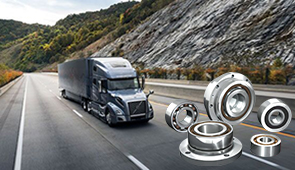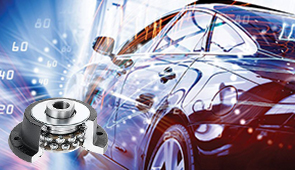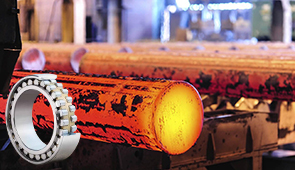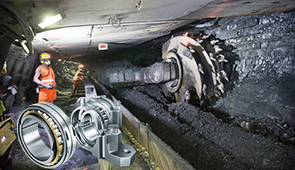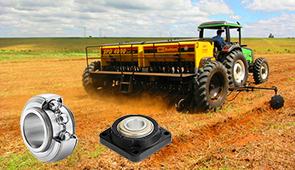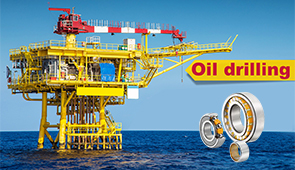Roller Bearings vs Ball Bearings: Understanding the Various Types of Bearings
Bearings are essential components in countless mechanical systems, playing a critical role in reducing friction, supporting loads, and enabling smooth rotational or linear motion. Among the many types of bearings, roller bearings and ball bearings are the most commonly used. While they may appear similar at first glance, understanding the distinctions between these two types is crucial for optimizing performance, durability, and cost-efficiency in specific applications. This article provides a detailed comparison of roller bearings and ball bearings, examining their unique designs, functions, and practical uses across various industries. Whether you’re a mechanical engineer, a machinery enthusiast, or someone seeking insights into industrial components, this guide aims to equip you with a clear and comprehensive understanding of the key differences and advantages of each bearing type.
What Are Roller Bearings and How Do They Work?
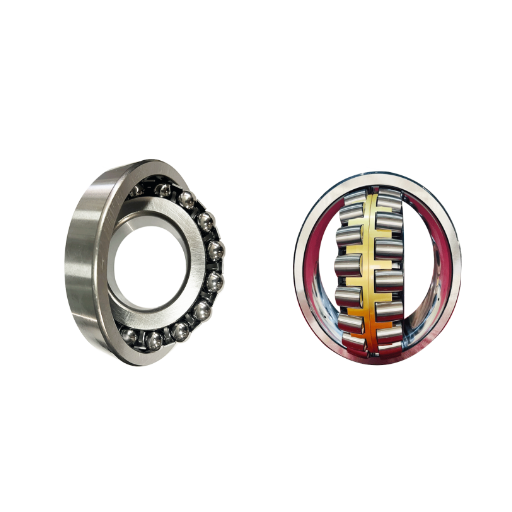
Understanding the Types of Bearings
Bearings are essential parts of mechanical systems since they enable motion (rotational or linear) while maintaining a reasonable level of friction. Two of the most common types of these components, roller and ball bearings, have been manufactured to meet specific functioning needs, and each type is better suited for accommodating a certain operational condition or load.
Compared to ball bearings, roller bearings have cylindrical, conical, or spherical rolling parts, which enable better weight distribution through increased surface contact. Roller bearings are better at dealing with high radial loads and intermediate axial loads because of the greater range of force resistance that these components offer. This makes them suitable for use in conveyor belt rollers, heavy machinery, and industrial gearboxes. With regards to construction aspects, there are subtypes: cylindrical roller, tapered roller, and spherical roller bearings, and each one has been optimized for a specific amount and alignment of load.
Operating at high speeds and needing precision movement in rotation are the main features of devices that use ball bearings. Relative to roller bearings, friction is a lot less with ball bearings, but so is the capacity for supporting load. The construction with spherical rolling elements allows ball bearings to tend to either radial or axial forces while rotating at high speeds, so they are frequently used in electric motors, automotive axles, and even aerospace components. Some of the popular representatives of this type are deep groove ball bearings, angular contact bearings, and thrust ball bearings.
Grasping the benefits and shortcomings for each type of bearing helps to better incorporate them into mechanical systems, thereby enhancing real world efficiency and durability.
Exploring the Load-Carrying Capacity of Roller Bearings
The greater contact between rolling parts and raceways allows roller bearings to have greater load capacity when compared to ball bearings. These bearings are also specially designed to bear both radial and axial loads which makes them fit to use in heavy-duty operations.
For example, cylindrical roller bearings are commonly used in high-speed operations and have a high radial load bearing capacity. Tapered roller bearings, on the other hand, are superior at handling a combination of radial and axial loads and are commonly used in automotive wheel hubs and gearboxes. Spherical roller bearings are best used where there is shaft misalignment or dynamic loads, since they can self-align. Needle roller bearings can support a lot of radial load but take up little space due to their shape.
The strength and durability of roller bearings has increased due to development in material science and lubrication technologies. Roller bearings made from high-performance steel alloys for example, are able to endure extreme operational environments. These as well as the predictive maintenance techniques which rely on sensors and real time data allow for long term reliability under optimal conditions.
The Role of Friction in Roller Bearings
Friction affects the efficiency and wear of roller bearings. Fittings like roller bearings are created to reduce this friction and energy loss by changing sliding into a rolling motion. Despite being an optimized system, friction is still present due to material properties, surface roughness, lubrication, and load distribution.
Another friction control system is the use of advanced lubrication systems. During operation, the lubricant reduces the metal surface contact by forming a film, thereby minimizing friction and heat. With the right conditions, roller bearings can achieve a 0.001 coefficient of friction which greatly depends on the lubricant and its viscosity. Moreover, new materials like ceramic rolling elements and advanced polymer cages are lowering thermal stability, rolling resistance, and therefore dissociating friction which makes these components more efficient.
Understanding how contaminants and temperature impact friction in roller bearings is equally important. Elevated temperatures can result in the breakdown of lubricants, which increases resistance and wear. Added particles can also cause rough surfaces and uneven load distribution, which increases friction. Therefore, the implementation of real-time monitoring systems like vibration analysis and thermal imaging allows for precise identification and monitoring of friction-related issues.
How Do Ball Bearings Differ from Roller Bearings?
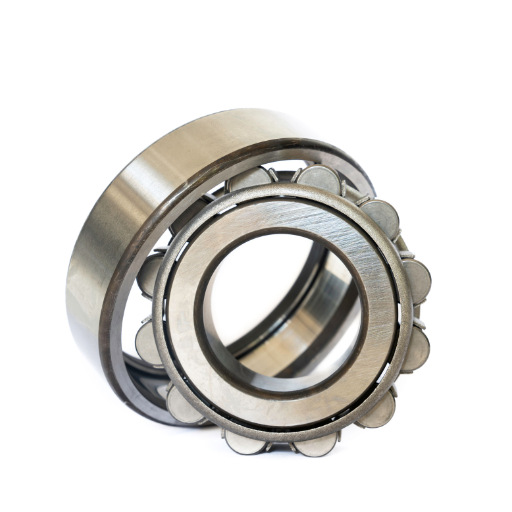
Comparing Radial Load Capabilities
Ball bearings and roller bearings are both bearing types that assist in the control and management of radial loads. However, their mechanical geometries and material properties dictate how they perform different tasks. A ball bearing contains a spherical rolled piece that touches the raceway at a specific point. With this type of contact, friction is lower, which means ball bearings can spin faster. On the negative side, this method of contact limits the radial load capacity, which means ball bearings can only be used for minimal loads.
Roller bearings on the other hand utilize cylindrical rolled pieces which form a contact line with the raceway. This method of contact distributes the weight more evenly throughout and enhances their ability to endure greater radial loads. For this reason roller bearings are best suited for heavy machinery components or conveyor systems that are constantly under high load stress.
Selecting between the different types of bearings should take into consideration the load capacity, speed of rotation, and general environment, since the bearings are affected differently depending on the distribution of stress.
Examining Axial Load Handling
Load handling about a bearing often means its ability to withstand forces applied parallel to its rotation axis. Bearings with axial load support are usually made to take these forces with minimal impact on wear and operational stability, or to maximally distribute the forces to reduce wear. Certain thrust bearings, cylindrical thrust roller bearings, or thrust ball bearings, are built specifically for this purpose. They are not made to withstand alone, but work in unison with transversal load bearings. For example, lower to moderately high axial loads at relatively high speeds are handled by thrust ball bearings, while massively robust cylindrical thrust roller bearings withstand heavy axial loads.
Any assessment of apex resistance should include bearing material, lubrication methods, and even the environment where it’s used. Superior endurance and axial stress bearing with chrome steel or ceramic enhance the bearing’s life span under great voluminous pressure. Fracture of parts is ensured with unlikely generation of friction or heat, which embodies ideal component life and bearing availability, and performance. Another thing is radical imposed environments like high rates of contamination or rapid change of temperature, ultra require ultra-special seals or materials to be functional while engaging axial loads.
An extensive study of axial load handling should also consider possible misalignment problems. Inefficient and accelerated bearing surface wear would stem from misaligned shafts. This could be difficult from a stress distribution perspective. To eliminate this problem, self-aligning thrust bearings or even spherical roller thrust bearings would have to be used as they account for misalignment and axial thrust forces.
Understanding Low Friction Benefits
The use of low-friction components in the design of mechanical systems is beneficial for operating expenses, equipment longevity, and overall system energy efficiency. Modern machines that incorporate friction minimization techniques are more economical to operate owing to lower energy consumption. An example of this is the use of synthetic oils or grease containing nanoscale particles as lubricants, which considerably lower friction coefficients. This results in less heat being produced and maintained, prolonging service life by preventing damage associated with reduced maintenance and servicing.
Furthermore, the impact of friction reduction is significant on the precision in robotics, aerospace systems, and advanced manufacturing. Minimizing energy losses by friction allows for higher efficiency at optimal performance over longer periods. Experimental data accentuates the significance of friction and wear in the design of industrial machinery, which are estimated to account for up to 30% of wasted energy. The use of advanced materials and engineered solutions tailored to reduce these factors is critically required.
At last, principles of low-friction design are helpful in the invention of sustainable technology. Take, for example, the automotive industry. Low-friction parts make fuel consumption more efficient, which also lowers CO2 emissions. This is quite parallel with world objectives. Such achievements highlight the importance of underscoring low-friction approaches in contemporary engineering.
When to Use Roller Bearings vs Ball Bearings?
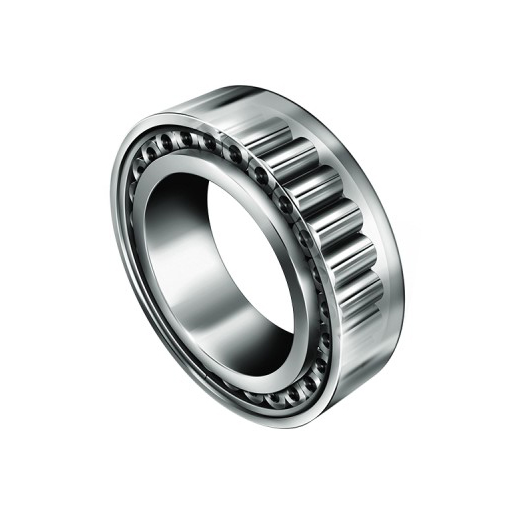
Choosing the Right Bearing for Your Application
The wider context of selecting the correct bearing offers numerous challenges which include operational and environmental factors. From all the different types of bearings, roller and ball bearings are different from one another based on the requirements on load, … rotational speed, and alignment tolerance.
- Load Type and Capacity: For supporting heavy radial loads in comparison to all bearings, roller bearings are best suited due to their higher load capacity. The line contact bearing raceways enhance load distribution. This allows roller bearings to support even higher loads than ball bearings. On the other hand, ball bearings are more adept at handling lighter loads. Furthermore, they tolerate higher rotational speeds, which are found in electric motors and precision-driven equipment.
- Rotational Speed: There are more demanding operations in which faster speeds are preferred. For such operations, a great amount of minimum friction and heat is preferred. In this, ball bearings outperform roller ones because of their lower rolling friction. Although roller bearings perform well for enduring extreme loads, they create a significant amount of high speed friction. Higher speed friction means more wear and heat, which is harmful.
- Misalignment Tolerance: This is also a critical factor that requires attention. About shaft misalignment, aligners are beneficial for self-aligning, leaving the angular composite bearings as they aid in minimal angular redefinition of the thermal performance, which requires parallel alignment.
- Environmental Conditions: Pay attention to the surroundings where it will be used, for instance, how hot it can get, how cold it can get, exposure to dirt, and levels of moisture. Bearings intended for harsh conditions might need special materials or protective seals to enable performance and durability.
Taking all these into consideration helps engineers make informed choices regarding the performance and durability of the machinery. The selection of the bearing together with maintenance activities enhances reliability and reduces operational costs.
Factors Influencing Bearing Type Selection
In addition to the type and magnitude of the load, several other factors must be taken into account when deciding which type of bearing would suit a particular application best. Each bearing can be made to support radial, axial, or combined loads. Ball bearings, for example, can support moderate axial and radial loads, and so can ride on them, while roller bearings tend to support heavier radial loads.
Another axis of impact is how quickly the specific bearing in question will be rotating. There are applications that would rather deal with high speeds, as those generally require low friction and good heat dissipation, for example bearings with ceramic rolling elements, or advanced lubricants. The environment—operating temperature, contaminants present, or corrosive substances—has a much more significant impact in regard to the material and sealing requirements of the bearing.
For equipment that must run continuously with minimal downtimes, self-lubricating or sealed-for-life bearings are a better option. The opposite scenario occurs in heavy-duty demand situations, or applications of intermittent use, where peak performance would only be reached with frequent lubrication.
Finally, having comprehensive knowledge of all the listed factors enables engineers to select the right bearing type for a particular application and functional requirements while minimizing wear and maximizing system efficiency.
Examples of Where These Bearings Are Used
Bearings are crucial in multiple applications and industries, each with specific performance requirements. In the automotive industry, for example, self-lubricating bearings are used in vehicles’ suspension systems, steering systems, and transmissions because they are maintenance-free and withstand wear. Also, in aerospace, high precision sealed bearings are very important in turbojet engines and landing gear systems because they require extreme reliability and performance under severe temperatures and loads.
Specifically in construction and mining, heavy machinery utilizes bearings that are robust and require frequent lubrication because they can withstand harsh weather while supporting heavy loads. In the medical field, miniaturized precision bearings are found in imaging and dental equipment where low vibration and smooth operation are critical. Furthermore, to improve efficiency and reduce downtime in systems like wind turbines, large, durable bearings that can withstand changes in load and rotation speed are needed.
The examples highlight the serious consequences that may arise from selecting a bearing type that is not suitably configured for a particular operation environment or system needs, especially in terms of working efficiency, life span, and performance.
What Are the Types of Ball Bearings Available?
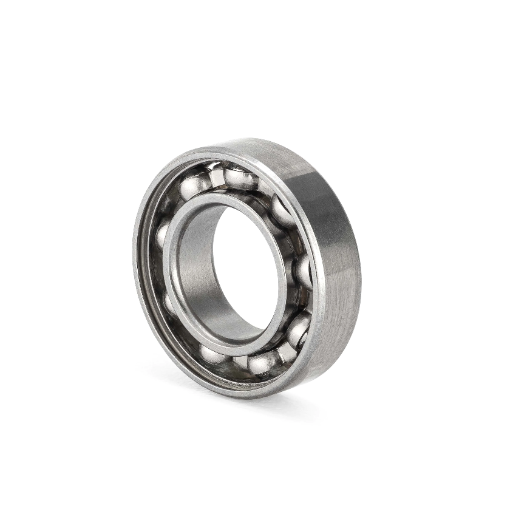
Exploring Deep Groove Ball Bearings
Deep groove ball bearings are widely used bearings because they are versatile and efficient. Their design deep raceway grooves which are proportionate to the diameter of the balls they carry further enhances their versatility. This allows them to sustain radial loads alongside moderate axial loads in both directions which suits a wide range of mechanial and industrial applications.
Typically, deep groove ball bearings are constructed using an outer ring, inner ring, cages that evenly space the balls, and a variety of rolling components. To improve their performance, modern developments in material science design these bearings using high-grade steel, ceramics, or even hybrid compounds. These materials improve their durability, temperature tolerance, and performance in extreme conditions. Improved methods of lubrication also reduce friction, increasing their operational lifespan.
The applications of deep groove ball bearings are extensive, from use in electric motors and household appliances to aerospace components and automotive systems. The low noise and vibration properties of these bearings make them ideal in precision-critical environments. Innovations like sealed and shielded versions further protect against contaminant ingress, reducing maintenance needs and increasing operational efficiency. Major concerns in bearing technology focus on refining energy efficiency as well as bearing capacity, load handling abilities, and materials to keep up with the dynamically changing industry requirements.
Understanding Self-Aligning Ball Bearings
Bears of this type can withstand misalignment between the shaft and housing contributing to self-alignment additionally making them well suited for applications where more rough assembly is expected. They All bearings with inbuilt spherical outer raceway said rotary cage structure possess the ability to tilt thus compensating for angular misalignments and ensuring smooth operation.
Self-aligning ball bearings operate with the use of the minimum amount of friction and best seals, which enable extreme rotational speeds while using chrome steel as a base material, reserving stainless steel for more corrosive environments. Some models provide longitudinal maintenance and operational longevity through the addition of lubrication grooves and other efficient bearing designs.
With regard to self-aligning ball bearings, the area of development is usually focused on improving load-carrying capacity and minimizing energy losses. These optimizations are usually achieved through increasing internal geometrical efficiencies, using newer coatings with lower friction, and using hybrid materials such as ceramic balls.
The Usage of Angular Contact Ball Bearings
Angular contact ball bearings are used for highly precise tasks as they can take both radial and axial loads at the same time. Unlike other bearings, their internal structure is differentiated with an angular contact which helps with support in only one axial direction and high rotational speeds. These types of bearings are extensively used in highly accurate and efficient industries such as robotics, aerospace, and machine tools.
The recent developments in the technology of angular contact ball bearings focus on improving the distribution of load and lowering the rate of wear. For instance, adding ceramic rolling elements changes the weight, rolling stiffness, and heat resistance of the bearing, making these parts more suitable for high-speed systems. Furthermore, the evolution in bearing lubrication systems now includes grease and oil with longer service life and reduced friction.
Angular contact ball bearings are often used in pairs or conjunctions, which enables the machine to better maneuver under different directions of loads. Pairing techniques have proven to give increased ability to carry the load without loss of accuracy in alignment. These bearings, which have dynamic applications, combine various sophisticated features such as modern bearing materials, which are further advanced through relentless changes of the material’s makeup and arrangement structure.
Understanding Thrust Bearings and Their Applications
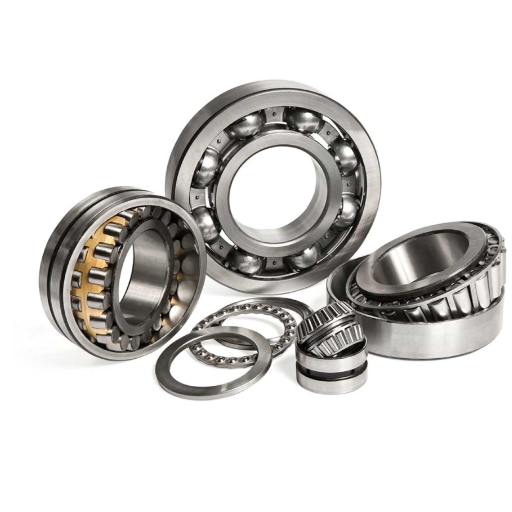
How Thrust Bearings Handle Loads
Thrust bearings are thrust-type bearings that carry axial loads, which are designed to accept and transmit forces parallel to the axis of rotation. Capacitive loads are unique to thrust bearings. These bearings normally work on rolling elements like balls or rollers fitting into raceways. With this arrangement, friction and wear is almost eliminated, thus ensuring durability under variable and heavy loading conditions.
With the Proprietary Manufacturing Method, thrust bearings have tight tolerances, improving alignment and thus the probability of failure. Modern designs of thrust bearings are mounted with specific alloy steels and even ceramics to enhance the bearings’ resistance to wear and deformation. Depending on the application and the load, thrust bearings can be categorized into different types: ball thrust bearing, tapered roller bearing, and spherical roller thrust bearing, each tailored to suit varying operational requirements.
Recent advancements focus on even greater reduction of friction and extension of operational life by utilizing sophisticated lubrication technologies, including synthetic lubricants specially designed for high-temperature applications. Because of propulsive hydraulic machinery and diesel engines, these withstand thrust bearings that withstand great axial loads are very important in aerospace, automotive, and heavy machinery industries, as precision and reliability are extremely crucial to operational efficiency.
Comparing Thrust Ball Bearings and Roller Types
Both thrust ball bearings and thrust roller bearings serve functions relevant to managing axial loads, yet have differing methods of operation, construction, ideal usages, and operational strain capabilities. Compact and low-friction applications require thrust ball bearings, which feature steel balls, due to their simplicity and efficiency in high-speed settings. They are designed in such a manner that enables rotary motion at lower axial loads, which makes them appropriate for precision instruments as well as high-speed systems with modest alignment that put forth axial forces.
Roller-type thrust bearings or thrust roller bearings use tapered, cylindrical, or spherical rollers, resulting in their ability to cope with greater load capacities than ball-type bearings. Due to their construction, roller bearings are best for Heavy machinery, automotive transmissions, and industrial equipment, owing to their greater combined axial and radial load capabilities. Additionally, advancements in material science and lubricants have made them more durable and temperature resistant, making them ideal for applications with harsh operating conditions that require long component life and sustained performance.
Ultimately, the decision depends on the system’s speed, load intensity, available space, and alignment conditions. Knowing these differences is important in selection for achieving efficiency and performance in engineering systems.
Applications for Thrust Bearings
Thrust bearings allow for axial loads and are therefore very important in a number of mechanical systems. One common application is in automotive systems, particularly transmission rotary mechanisms such as clutches and gear boxes, where they control axial thrust for proper operations. Besides, they are widely used for rotating machines like turbines, pumps and compressors for the smooth operation by thrusting and controlling friction.
Under high-performance designs of a machine, thrust bearings are added to achieve controllable performance metrics under high load conditions. For example, in industrial robotics and aerospace engineering, these bearings are used to position rotating elements with static and dynamic axial load resilience under high scrutiny. Besides, wind-mounted turbines rely heavily on advanced thrust bearings to maintain the rotor shaft in position while offsetting colossal aligning loads generated from wind pressure.
The manufacturing process of thrust bearings is being advanced through the use of new materials and coatings which improves their load-carrying capabilities and resistance to wear. This development is particularly useful for thrust bearings designed for extreme temperatures, high rotational speeds, or other harsh and corrosive conditions where long service life and reliability is critical.
Frequently Asked Questions (FAQs)
Q: What are the main differences between ball and roller bearings?
A: Ball bearings use spherical balls as the rolling elements, while roller bearings use cylindrical or tapered elements. Ball bearings are ideal for applications requiring high speed and less friction, whereas roller bearings can handle heavier loads due to their larger contact area.
Q: How do ball and roller bearings differ in terms of their contact area?
A: Ball bearings have a point contact, which allows them to operate at higher speeds with less friction. Roller bearings, on the other hand, have a larger contact area, which enables them to support heavier loads and handle radial loads more effectively.
Q: What are radial ball bearings, and where are they used?
A: Radial ball bearings are designed to handle pure radial loads and are used in applications where the load is perpendicular to the axis. They are commonly found in machinery requiring low friction and high speed.
Q: When should I choose spherical roller bearings over other types of roller bearings?
A: Spherical roller bearings are optimal for applications involving misalignment and heavy radial loads. They are designed to accommodate angular misalignment and are used in industries such as mining and construction.
Q: What are the advantages of using cylindrical roller bearings?
A: Cylindrical roller bearings offer high radial load capacity and are suitable for applications with high speeds and heavy radial loads. Their design allows them to accommodate axial displacement in the shaft.
Q: Why might one choose double-row ball bearings in a mechanical design?
A: Double row ball bearings provide higher load capacity and can handle both radial and axial loads. They are used in applications where space is limited, but higher load support is required.
Q: How do taper roller bearings differ from other bearings?
A: Taper roller bearings are designed to handle both radial and axial loads and are particularly effective in applications with combined loads. Their conical shape allows them to manage larger contact and support axial forces.
Q: What is important to consider in bearing selection for an application?
A: When selecting bearings, consider factors such as load capacity, speed, alignment, space constraints, and the specific application requirements. It’s crucial to match the bearing type to the operating conditions to ensure optimal performance.
Q: Can roller bearings handle higher speeds compared to ball bearings?
A: Generally, ball bearings have a higher speed capability due to their point contact design, which reduces friction. Roller bearings are more suited for applications requiring support for heavier loads rather than high-speed operations.
Q: Are there specific applications where ball bearings are ideal?
A: Ball bearings are ideal for applications that require low friction, high speed, and precision. They are commonly used in electric motors, hard drives, and various high-speed machinery.
UCTH213-40J-300 with Setscrew(inch)
CNSORDERNO: Normal-duty(2)
TOGN: UCTH213-40J-300
SDI: B-R1/8
SD: 2 1/2
UCTH212-39J-300 with Setscrew(inch)
CNSORDERNO: Normal-duty(2)
TOGN: UCTH212-39J-300
SDI: B-R1/8
SD: 2 7/16
UCTH212-38J-300 with Setscrew(inch)
CNSORDERNO: Normal-duty(2)
TOGN: UCTH212-38J-300
SDI: B-R1/8
SD: 2 3/8
UCTH212-36J-300 with Setscrew(inch)
CNSORDERNO: Normal-duty(2)
TOGN: UCTH212-36J-300
SDI: B-R1/8
SD: 2 1/4
UCTH211-35J-300 with Setscrew(inch)
CNSORDERNO: Normal-duty(2)
TOGN: UCTH211-35J-300
SDI: B-R1/8
SD: 2 3/16
UCTH211-34J-300 with Setscrew(inch)
CNSORDERNO: Normal-duty(2)
TOGN: UCTH211-34J-300
SDI: B-R1/8
SD: 2 1/8










